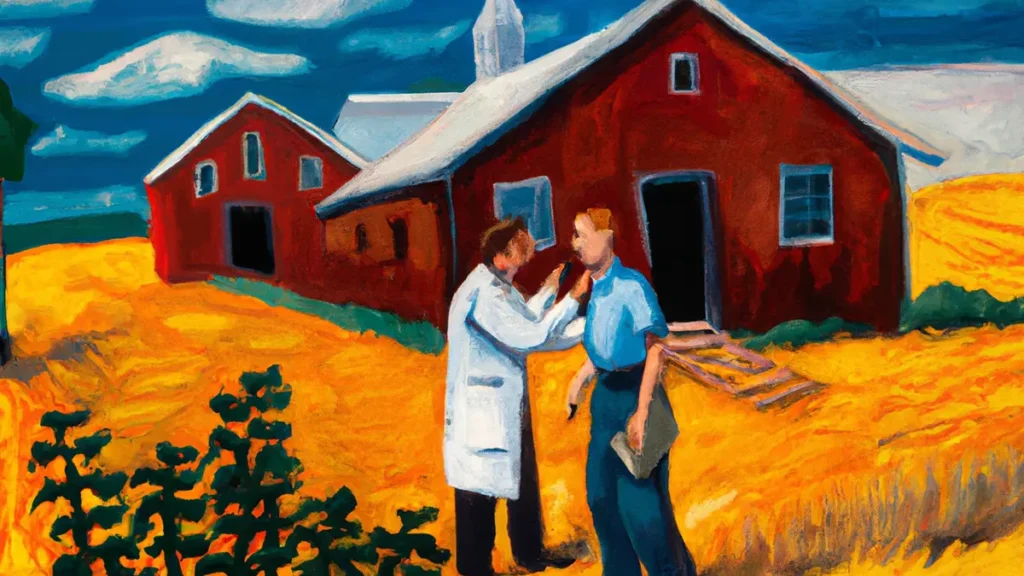Last Updated on July 27, 2023 by Laura Turner
Every application cycle, applicants request expert reviews on the Student Doctor Network to help them assess “What Are My Chances” (WAMC) at getting accepted to their desired health professional programs. While GPA and test metrics can filter the pool of applicants, getting an interview requires measuring how well an applicant fits with the school’s mission. Here are some things you can do to show your mission fits theirs and that you have built a school list wisely.
Mission, vision, and core values
A professional program organizes itself around a strategic vision (to be the best program), mission (to relate to the community), and core values (how everyone belongs). These statements should be prominent on the program’s website and supported by curricular experiences or accomplishments. Most of these statements seem very similar and can reflect their host university, so you need to see how each program “walks the talk.”
Research-focused programs
Research-intensive programs like to use keywords that describe “innovation,” “discovery,” or “inquiry” in their vision, mission, and core values. Supporting research requires a well-funded research office for students, faculty, and graduates (residents/fellows) overseen by a designated dean or executive for research and innovation. Deans can be designated to oversee clinical research and basic science or community health research. The curriculum may also include protected time for students to focus on student research instead of concurrently worrying about lectures, board exams, or clinical rotations.
External funding for distinguished and early-career faculty shows the strength of research support throughout the university and in specific programs. Look for distinctions or leadership appointments from national or international professional organizations or funding agencies (NIH, NSF, Howard Hughes Medical Institute) among the faculty. There are often research meetings for professional programs, so look at the number of presenting student-authors at these meetings.
In addition to published faculty profiles shown in alumni magazines or on the school’s newsfeeds, every school hosts events highlighting student research that gets presented at conferences or published. Student participation is highlighted on social media accounts. Further, a university may host innovation and entrepreneurship workshops (“hackathons”) that involve students from across the community. See if professional students are involved and how they are represented among the winning projects or teams.
Community-centered programs
Acknowledging disparities, community-centered institutions and programs work closely with the local community by providing charitable care, with health professions students playing a valuable role. Their mission statement may state explicitly their responsibility to their neighboring communities and counties, and the curriculum includes a heavy emphasis on humanism, cultural competency, and diversity. Most schools signal this commitment using phrases like “reducing health disparities” and “serving the state” in their mission. Look for key phrases that emphasize “primary care,” “diverse communities,” “rural communities,” or “social mission.”
Each program should have a designated dean focused on community engagement and health through curricular or extracurricular clinical rotations and opportunities. While every program should have opportunities to address healthcare disparities among marginalized or resource-limited communities, community-oriented programs should maximize the opportunities to work at mobile clinics or collaborate with social work services. Profiled students are most likely native or longstanding residents of the area served by the program. Programs will also promote opportunities with sponsorship partners like the Robert Wood Johnson Foundation or an Area Health Education Center (AHEC), and students may have to complete extracurricular community service as a graduation requirement.
Community impact is also recognized with outside funding from other healthcare organizations, regional or state government, and benefactors with a strong interest in community or public health. Students and faculty get opportunities to champion these experiences in conferences and the annual institutional research showcase. Interprofessional training and clinical experiences are also championed by the administration, and extracurricular community volunteering and fundraising keep students and faculty engaged in addressing social inequities and determinants of health. These programs proudly tout the amount of charitable care they deliver to patients annually.
Rural Health
If your passion is focused on the health needs of rural communities, see if you have prepared your application to signal your interest.
What are my chances? How we look for fit.
When someone posts their “What Are My Chances (WAMC)” profile, I notice how the applicant describes important activities that I presume are highlighted accomplishments or qualifications for an interview. Application reviewers imagine how each candidate fits a program by looking at past leadership experiences, research accomplishments, and community service activities disclosed in the application. Admissions faculty can often lean on their research peers to consider how well an applicant understands their impact on a project. Faculty directors of community projects read an applicant’s reflections on the impact made on individuals and their communities to gauge authentic passion for service orientation. Admissions committees are thus more inclined to interview candidates who show they belong, can excel in their program, and take advantage of any special opportunities or resources further to affirm a candidate’s purpose in health care.
The school promotes current students and faculty who best exemplify the vision, mission, and core values of the program to engage alumni and donors. Students are featured as examples of the quality of students the program attracts and retains through scholarships. If your inspirational journey to the profession and personal vision as a future alumnus resonates with the program’s core values, you could be a strong candidate not just for admission but for an alumni-funded or donor-supported scholarship.
Other ways to connect with admissions committees
Overlapping hobbies and social interests
In seeking common ground with a candidate, interviewers seek interesting hobbies to begin a conversation. While there can be generational challenges, an interviewer may have children who share similar interests with the candidate. More importantly, a candidate needs to consider if there is a community that supports their hobbies and interests when taking a break from intense studying. Candidates who for years have enjoyed snowboarding and mountain biking should consider why their school list includes programs in coastal, warm cities.
Language fluency and involvement with student affinity groups
Future healthcare providers must be culturally competent in managing the care of multilingual communities. Fluency in a non-English language helps highlight one’s value to the program’s mission. If you were involved in an affinity group as a pre-college student or before application, you should see whether similar affinity groups exist for the program or at-large students. In the absence of a large national organization, for example, South Asian students may find clubs where “Desi” or “Filipino” students congregate.
Consistent messaging (but not to an extreme)
Once applicants understand how their personal journey, their academic accomplishments, their extracurricular activities, and their clinical experiences contribute to a coherent vision fulfilled by a program’s mission fit, applicants should be mindful of keeping the “application theme” in various parts of the application (including letters of evaluation). However, it should be noted that programs must evaluate applicants’ ability to complete their curriculum. Having a strong mission fit will not compensate for less-than-ideal academic preparation. Overselling one’s theme also can make the applicant appear desperate or hyperfocused on becoming a professional but lacking other desirable characteristics that the program wants in its incoming class. Not every activity or secondary essay needs an explicit sentence pointing out why you want to be a healthcare professional. It’s okay to show your personality and be yourself as long as you maintain professional decorum.
With applicants applying to dozens of programs, applicants should take a few months (up to a year) to reflect on their own vision and desirable mission fit. It takes time for a strong application to present enough evidence that the applicant is ready not just for the rigors of graduate education but also for the challenges of helping vulnerable patients cope. As more programs intensify their holistic selection of applicants who will thrive, applicants must embrace the schools’ mission fits and responsibility to their local communities to get that interview invitation and admissions offer.
Describing your fit in the post-affirmative-action era
With the 2023 Supreme Court decisions effectively prohibiting race-conscious admissions policies, the burden of explaining adversity due to systemic discrimination is now on the shoulders of the applicant. You should connect your life experiences and journey to the profession with the critical missions the programs and schools have committed to. Applicants should also be aware of the environmental and political factors that define individuals’ and communities’ adversity and communicate them in the application and interviews where appropriate. Schools may not infer your racial/ethnic identity from your submission. Still, they can place more value on how your life experiences and professional focus align with their mission and core values. Interviews and offers should go to candidates who best show this match, even if their metrics may not be ideal.
Enrollees to HPSA’s Becoming a Student Doctor can explore background information about challenges facing all communities and the healthcare system. The course is a primer on social justice, competencies, and future challenges facing healthcare, and it gives applicants the vocabulary and historical perspective to connect their vision to their future to serve patients with limited resources and access.

